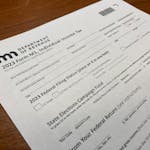Q: I am in the start-up process for a nonprofit. What should I consider when forecasting a budget for a 12-month business plan?
LaTonia E. Taylor, founder
Inspired Creations, Inc.
A: One consideration is to match your operating budget to your accounting method. Start-ups and smaller nonprofits that use the cash basis should budget operations on the cash basis. Organizations that use accrual accounting should budget on that basis. Whichever the basis, budget the same accounts you will use to record actual results. If you are tax-exempt, consider matching your budgeting and accounting to Form 990 as best you can. Break the annual budget into months; a year is too long to budget.
It is a common misconception that nonprofits should have expenses equal to revenue. It is acceptable for a nonprofit to build a reasonable amount of reserves to weather a "rainy day." Budget an appropriate excess of revenue over expenses.
Determine the factors that drive each element of revenue and expense and document your assumptions. It is common for nonprofits to obtain governmental support revenue based on the number of clients served.
Be sure to determine both the revenue and cost per client and be sure to use the same number of clients to budget both. It is also common for nonprofits that receive contributions to see their largest monthly amounts in December, as taxpayers look to make deductible contributions before year-end.
Another unique item for nonprofits is noncash contributions. If a nonprofit expects $1,000 of rent-free use of a space, it should budget (and later record) revenue of $1,000 for the contribution and an expense of $1,000. While the net effect is zero, this shows the true cost of operations and a potential cash need in future budgets if the nonprofit will no longer receive the contribution.
Link your operating budget to a cash budget that shows beginning cash, cash receipts and disbursements, and ending cash. If you use accrual accounting, the timing of these items will lag from your revenue and expenses. Include capital asset purchases (e.g., furniture) and any loan payments. The cash budget will point out any monthly cash shortages.
Richard Sathe is a professor of accounting at the University of St. Thomas Opus College of Business.


